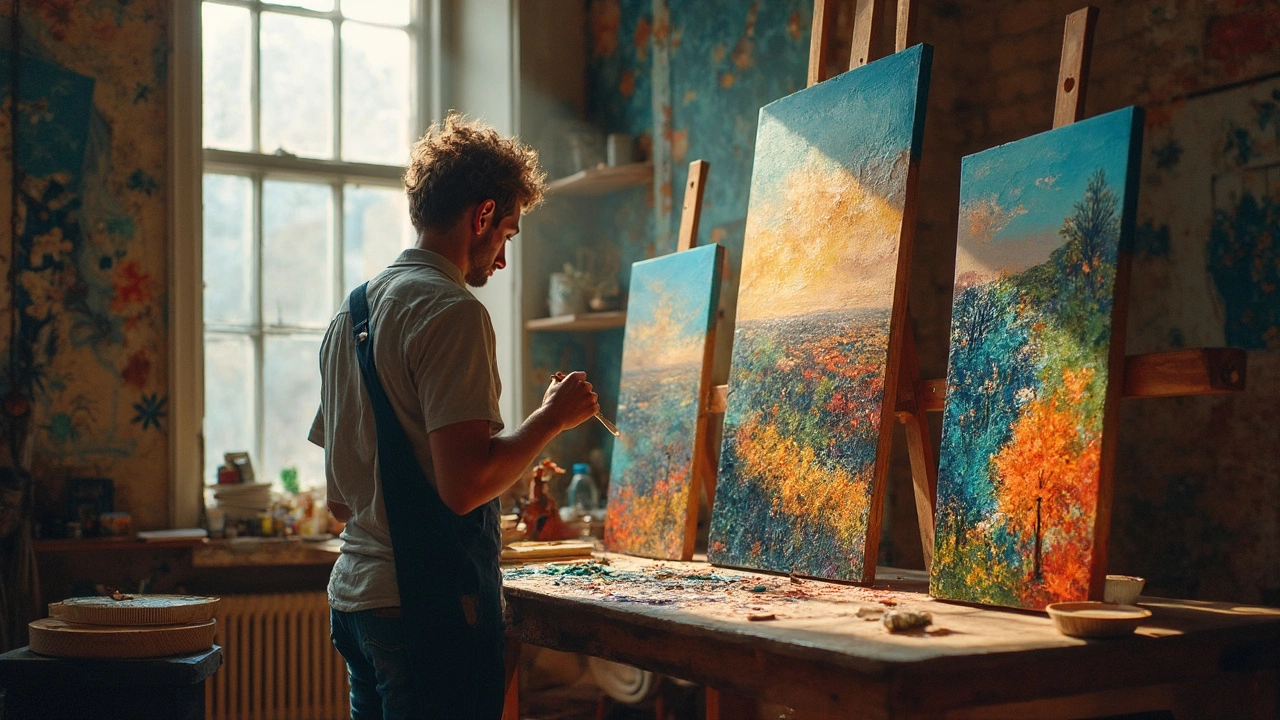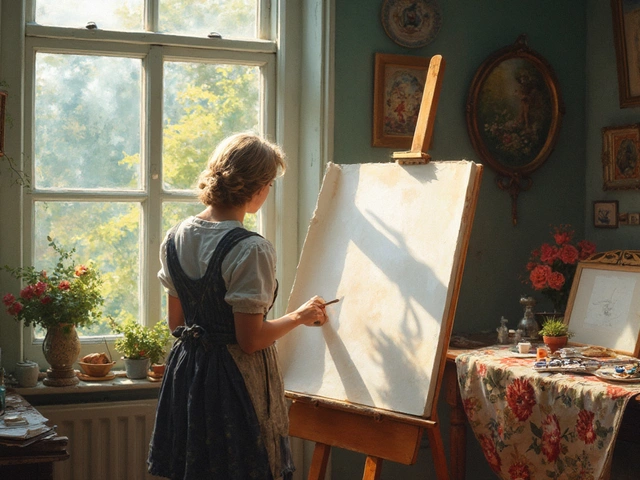Sponging in Art: Techniques, Tips, and Creative Possibilities
When working with sponging, a method that uses natural or synthetic sponges to apply, lift or blend paint. Also known as sponge technique, it adds texture and depth to a surface. Artists rely on it to break up flat color fields and to give a painting a tactile feel.
Another core idea linked to sponging is texture, the visual and tactile quality created by surface variations. Texture can be subtle, like a fine grain, or bold, like a raised silhouette left by a sponge. When you add texture, you’re also influencing mixed media, the practice of combining different materials and techniques in one artwork. Combining sponging with ink, collage, or pastel lets you move beyond pure paint and opens up fresh visual routes.
In watercolor, sponging works a bit differently because the medium is transparent and dries quickly. The sponge pulls water and pigment, creating soft, cloudy shapes that mimic clouds or mist. Because watercolor relies on the paper’s absorbency, artists often use a dry sponge to lift color, creating highlights or correcting mistakes without harsh lines. This approach makes sponging a handy tool for building atmospheric depth in landscapes or abstract pieces.
Oil painters also love sponging for its ability to create thick, impasto effects. A damp sponge can blend wet oil, softening edges, while a dry sponge can press fresh paint into the canvas, leaving a raised pattern. The oil medium’s slow drying time gives you plenty of room to re‑work the sponge marks, letting you sculpt light and shadow in a very physical way. Many modern artists blend oil sponging with acrylic underpainting for added control.
Why Sponging Works Across Styles
Sponging isn’t limited to a single style; it shows up in realism, abstract, and even street art. In abstract work, the random nature of sponge marks can become a central visual language, guiding the eye across color fields. In realism, a carefully placed sponge dab can suggest foliage, stone texture, or weathered surfaces without painstaking brushwork. The technique also plays well with digital workflows—artists can scan sponge textures and layer them in Photoshop or Procreate for mixed‑media collages.
Putting all this together, sponging sponging gives you a fast, versatile way to add interest to any painting. Whether you’re mixing media, exploring watercolor atmospheres, or building bold oil impasto, the sponge becomes an extension of your hand. Below you’ll find articles that dive deeper into each of these angles, from practical step‑by‑step guides to inspiration from contemporary creators. Keep reading to see how the sponge can change the way you work with texture, color, and composition.

Sponging in art involves using a sponge to create texture and depth in oil paintings. This technique allows artists to add unique patterns and layers, enhancing the visual interest of their work. By experimenting with different sponge types and painting surfaces, artists can achieve varied effects. Sponging is accessible for beginners yet offers room for creative exploration for experienced painters. Adding this method to your artistic toolkit can bring a fresh dimension to your oil paintings.





